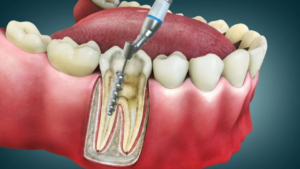Trimming your dog’s nails is an essential part of their grooming routine, ensuring their comfort, health, and mobility. However, many dog owners are apprehensive about nail trimming due to the fear of hurting their furry companions. Although pet salon provide nail-trimming services, learning to do it yourself can save you time and money. In this article, we’ll show you exactly how to trim your dog’s nails without inflicting pain or discomfort on them.
Gather the Necessary Tools
Before you begin trimming your dog’s nails, it’s crucial to gather the necessary tools. Here’s what you’ll need:
Nail Trimming Tools
- Dog nail clippers: Invest in a pair of high-quality, dog-specific nail clippers. There are different types available, including guillotine-style clippers and scissor-style clippers. Choose the one that you feel most comfortable using.
- Styptic powder or cornstarch: Accidents can happen, and if you accidentally cut your dog’s nail too short and it starts bleeding, styptic powder or cornstarch can help stop the bleeding. Have some on hand, just in case.
Familiarize Your Dog with Nail Trimming
Before you start trimming your dog’s nails, it’s essential to familiarize them with the process and make them feel comfortable.
Gradual Introduction
- Get your dog used to having their paws touched: Start by gently touching and massaging your dog’s paws on a regular basis, gradually building up their tolerance to having their paws handled.
- Associate positive experiences with nail trimming: Offer treats, praise, and rewards whenever you touch or handle your dog’s paws. This will help create a positive association with the nail-trimming process.
- Use desensitization techniques: Gradually introduce the sound and motion of the nail clippers without actually trimming the nails. This will help your dog become familiar with the tools and reduce anxiety.
Proper Nail Trimming Technique
Now that your dog is comfortable with the nail trimming process, it’s time to start trimming their nails using the proper technique.
Identify the Quick
- Examine your dog’s nails: Take a close look at your dog’s nails and identify the quick. The quick is the pink area within the nail that contains blood vessels and nerves. It’s essential to avoid cutting into the quick to prevent pain and bleeding.
- Trim gradually: Start by trimming a small amount of the nail at a time. If your dog has clear or white nails, you can see the quick as a pinkish area. For dogs with dark nails, trim a thin sliver at a time, avoiding the quick.
The Three-Point Technique
- Hold your dog’s paw gently: Hold your dog’s paw firmly but gently, ensuring a secure grip. Be cautious not to apply too much pressure, as it may cause discomfort.
- Identify the cutting points: Look for the natural curve of the nail and identify three cutting points: one at the tip, one in the middle, and one near the base.
- Trim in small sections: Begin by trimming the tip of the nail using a smooth, steady motion. Then, move on to the middle cutting point and, if necessary, trim a small portion near the base. Always avoid cutting close to the quick.
Take Breaks and Stay Calm
- Be patient and calm: Dogs can sense your energy, so it’s important to remain calm and composed throughout
- Take breaks if needed: If your dog becomes anxious or restless during the nail trimming session, take breaks to allow them to relax. It’s better to proceed slowly and ensure your dog’s comfort rather than rushing and causing distress.
- Use positive reinforcement: Reward your dog with treats, praise, and petting after each successful nail-trimming session. Positive reinforcement helps create a positive association with the process and encourages cooperation in the future.
Handling Difficult Situations
Nail trimming can be challenging, especially if your dog is fearful or resistant.
Seek Professional Assistance
- Consult a professional: If you’re unable to trim your dog’s nails comfortably or if your dog exhibits extreme fear or aggression during the process, it’s best to seek professional assistance. A trained groomer at a pet salon will have the experience and expertise to handle difficult situations safely.
Consider Alternative Options
- Grinding instead of trimming: If your dog is particularly sensitive to nail trimming, you can consider using a nail grinder instead. Nail grinders file down the nails gradually, reducing the risk of cutting into the quickly.
- Regular walks on abrasive surfaces: Taking your dog for regular walks on abrasive surfaces such as concrete or asphalt can help naturally wear down their nails. However, this method may not be sufficient for all dogs and may still require occasional trimming.
Conclusion
Learning how to properly trim your dog’s nails without causing them any pain or discomfort is an essential skill for pet owners. By following the step-by-step guide provided in this article, you can confidently perform nail trims at home and contribute to your dog’s overall well-being.
Taking care of your dog’s nails is crucial for their comfort, mobility, and paw health. While professional pet care Abu Dhabi, offer nail trimming services, learning to do it yourself can save you time and money in the long run.
Begin by gathering the necessary tools, including dog-specific nail clippers and styptic powder or cornstarch to stop bleeding in case of accidental cuts. It’s also important to familiarize your dog with the nail trimming process gradually, using positive reinforcement techniques to create a positive association with the experience.











+ There are no comments
Add yours